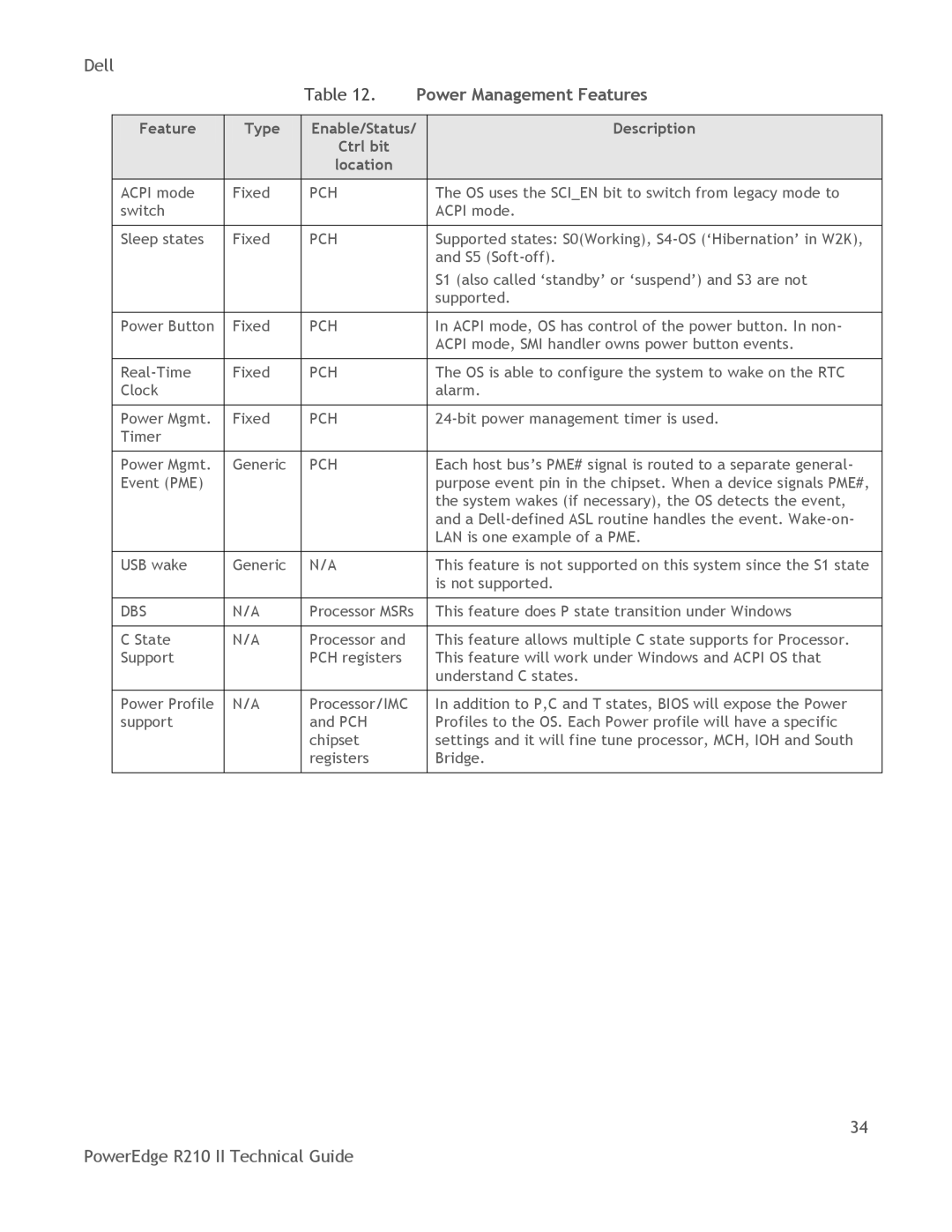Dell |
|
|
|
| |
|
|
| Table 12. | Power Management Features | |
|
|
|
|
| |
| Feature | Type | Enable/Status/ | Description | |
|
|
| Ctrl bit |
|
|
|
|
| location |
|
|
|
|
|
|
|
|
| ACPI mode | Fixed | PCH |
| The OS uses the SCI_EN bit to switch from legacy mode to |
| switch |
|
|
| ACPI mode. |
|
|
|
|
|
|
| Sleep states | Fixed | PCH |
| Supported states: S0(Working), |
|
|
|
|
| and S5 |
|
|
|
|
| S1 (also called ‗standby‘ or ‗suspend‘) and S3 are not |
|
|
|
|
| supported. |
|
|
|
|
|
|
| Power Button | Fixed | PCH |
| In ACPI mode, OS has control of the power button. In non- |
|
|
|
|
| ACPI mode, SMI handler owns power button events. |
|
|
|
|
|
|
| Fixed | PCH |
| The OS is able to configure the system to wake on the RTC | |
| Clock |
|
|
| alarm. |
|
|
|
|
|
|
| Power Mgmt. | Fixed | PCH |
| |
| Timer |
|
|
|
|
|
|
|
|
|
|
| Power Mgmt. | Generic | PCH |
| Each host bus‘s PME# signal is routed to a separate general- |
| Event (PME) |
|
|
| purpose event pin in the chipset. When a device signals PME#, |
|
|
|
|
| the system wakes (if necessary), the OS detects the event, |
|
|
|
|
| and a |
|
|
|
|
| LAN is one example of a PME. |
|
|
|
|
|
|
| USB wake | Generic | N/A |
| This feature is not supported on this system since the S1 state |
|
|
|
|
| is not supported. |
|
|
|
|
|
|
| DBS | N/A | Processor MSRs |
| This feature does P state transition under Windows |
|
|
|
|
|
|
| C State | N/A | Processor and |
| This feature allows multiple C state supports for Processor. |
| Support |
| PCH registers |
| This feature will work under Windows and ACPI OS that |
|
|
|
|
| understand C states. |
|
|
|
|
|
|
| Power Profile | N/A | Processor/IMC |
| In addition to P,C and T states, BIOS will expose the Power |
| support |
| and PCH |
| Profiles to the OS. Each Power profile will have a specific |
|
|
| chipset |
| settings and it will fine tune processor, MCH, IOH and South |
|
|
| registers |
| Bridge. |
|
|
|
|
|
|
34
PowerEdge R210 II Technical Guide
